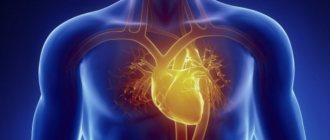Types of diabetic coma
Increased attention to the prevention of the development of diabetic comas is due to the high level of complications of these life-threatening conditions. The mortality rate for diabetic ketoacidosis (DKA) in European countries is 2-7%, in the Russian Federation 7-19% [1].
The incidence of DKA in people living with type 1 diabetes mellitus (DM) is 10-100 cases per 1000 cases. About a third of them end up in hospitals in a state of diabetic coma [2]. At the same time, competent glucose-lowering therapy can significantly reduce the likelihood of developing comatose states and delay the development of other serious complications of diabetes [1].
There are 4 types of comas that develop in diabetes:
- Diabetic ketoacidotic. In the medical literature it is also referred to as hyperglycemic hyperketonemic.
- Diabetic non-ketoacidotic hyperosmolar. It is also hyperosmolar non-acidotic.
- Lactic acidosis (lactic acidosis).
- Hypoglycemic coma [2, 3, 7].
List of sources
- Efimov A. S., Komissarenko I. V., Skrobonskaya N.A. Emergency endocrinology. – M.: Medicine, 1982, – 208 p.
- Balabolkin M.I., Lukyanchikov V.S. Clinic and therapy of critical conditions in endocrinology. – Kyiv: Health, 1982, – 152 p.
- Kurek, V.V. Guide to emergency conditions in children / V.V. Kurek, A.E. Kulagin. 2nd ed. Moscow: Med. lit., 2012, - 464 p.
- Sumin, S. A. Anesthesiology, resuscitation, intensive care: textbook. for students of institutions of higher professional education / S. A. Sumin, I. I. Dolgina. Moscow: Medical Information Agency, 2015, 496 p.
- Krylov, V.V. Neuroreanimatology. Practical guide / V. V. Krylov, S. S. Petrikov. Moscow: GEOTAR-Media, 2010, - 176 p.
Ketoacidotic
Hyperglycemic hyperketonemic coma is an acute decompensation of diabetes, which develops as a result of severe insulin deficiency. At the same time, there is a lot of glucose in the blood, but in the absence of insulin it does not enter the cells, so fat begins to be used as an energy source instead of carbohydrates.
Active breakdown and inclusion of free fatty acids in metabolism leads to the formation of ketone bodies. Their synthesis increases to 1000 mmol per day, which significantly exceeds the ability of the kidneys to excrete ketones in the urine [7].
Changes in blood and urine tests in diabetic ketoacidosis in adults are presented in table [1].
| Laboratory indicators | Values |
| Blood plasma glucose | >13 mmol/l to 18-20 mmol/l [3] |
| Plasma ketone bodies | >5 mmol/l |
| Ketonuria | ≥++ |
| pH | ˂7,3 |
Emergency conditions for diabetes mellitus at the prehospital stage
TO
omas are acute complications of diabetes mellitus (DM) and often lead to death. It is a direct result of changes in blood glucose in the form of hyperglycemia or hypoglycemia and associated metabolic disturbances. If left uncorrected, hyperglycemia can lead to diabetic ketoacidosis (DKA) or nonketonic hyperosmolar coma. They are characterized by varying degrees of insulin deficiency, excess production of counter-insulin hormones and dehydration. In some cases, signs of diabetic ketoacidosis and hyperosmolar coma may develop simultaneously.
Hypoglycemia is caused by an imbalance between the medication used to treat diabetes (insulin or blood glucose-lowering tablets) and food intake or exercise. A sharp drop in glucose concentration leads to loss of consciousness, since the normal functioning of the brain is almost entirely dependent on glucose. Patients with diabetes mellitus may develop the following comatose states, directly related and specifically caused by the underlying disease - ketoacidotic, hyperosmolar and hypoglycemic.
The speed and timeliness of providing care to comatose patients largely determine the prognosis. Therefore, from these positions, the correct management of patients at the prehospital stage seems to be the most important.
Hypoglycemic coma ranks third (5.4%) in the structure of comas at the prehospital stage, and diabetic coma (3%) ranks fifth (data from the National Emergency Medical Center).
Diabetic ketoacidotic coma
Diabetic ketoacidotic coma (DKA) is a serious complication of diabetes mellitus, characterized by metabolic acidosis (pH less than 7.35 or bicarbonate concentration less than 15 mmol/L), an increase in the anion gap, hyperglycemia above 14 mmol/L, and ketonemia. More often develops in type 1 diabetes. The frequency is from 5 to 20 cases per 1000 patients per year (2/100). Mortality rate is 5–15%, for patients over 60 years old – 20%. More than 16% of patients with type 1 diabetes die from ketoacidotic coma. The cause of DKA is an absolute or pronounced relative deficiency of insulin due to inadequate insulin therapy or an increased need for insulin.
Provoking factors:
- Insufficient dose of insulin or skipping an insulin injection (or taking tablets of hypoglycemic drugs).
- Unauthorized withdrawal of glucose-lowering therapy.
- Violation of insulin administration technique.
- The addition of other diseases (infections, trauma, operations, pregnancy, myocardial infarction, stroke, stress, etc.).
- Diet disorders (too many carbohydrates).
- Physical activity with high glycemia.
- Alcohol abuse.
- Insufficient self-monitoring of metabolism.
- Taking certain medications (corticosteroids, oral contraceptives, thyroid hormones, calcitonin, saluretics, ethacrynic acid, acetazolamide, b-blockers, diltiazem, adrenaline, dobutamine, diazoxide, nicotinic acid, isoniazid, asparaginase, cyclophosphamide, diphenine, morphine, lithium carbonate and etc.).
Often the etiology of DKA remains unknown. It should be remembered that up to 25% of cases of DKA occur in patients with newly diagnosed diabetes mellitus.
Clinical picture and classification
There are three stages of diabetic ketoacidosis (Table 1):
1.
Moderate ketoacidosis
.
2. Precoma, or decompensated ketoacidosis
.
3. Coma
.
Complications of ketoacidotic coma - deep vein thrombosis, pulmonary embolism, arterial thrombosis (myocardial infarction, cerebral infarction, necrosis), aspiration pneumonia, cerebral edema, pulmonary edema, infections, rarely - gastrointestinal tract and ischemic colitis, erosive gastritis, late hypoglycemia. Severe respiratory failure, oliguria and renal failure are noted. Complications of therapy are cerebral and pulmonary edema, hypoglycemia, hypokalemia, hyponatremia, hypophosphatemia.
Diagnostic criteria
1. The peculiarity of DKA is its gradual development, usually over several days.
2. The presence of symptoms of ketoacidosis (the smell of acetone in the exhaled air, Kussmaul breathing, nausea, vomiting, anorexia, abdominal pain).
3. The presence of symptoms of dehydration (decreased tissue turgor, tone of the eyeballs, muscle tone, tendon reflexes, body temperature and blood pressure).
It should be remembered that with type 2 diabetes, one should always look for an intercurrent disease as the cause of decompensation of diabetes.
List of questions required when diagnosing DKA at the prehospital stage:
– Does the patient suffer from diabetes?
– was there a history of DKA?
– is the patient receiving glucose-lowering therapy, what kind, and the last dose of the drug?
– when was the last meal or inadequate meal or skipping?
– was there too much physical activity or alcohol intake?
– what recent diseases preceded the coma (infectious diseases)?
– Was there polyuria, polydipsia and weakness?
Possible errors in therapy and diagnosis at the prehospital stage:
1. Insulin therapy at the prehospital stage without the ability to determine the level of glycemia and its control.
2. The emphasis in treatment is on intensive insulin therapy in the absence of effective rehydration.
3. Insufficient volume of fluids administered.
4. Administration of hypotonic solutions, especially at the beginning of treatment. This can lead to cerebral edema and intravascular hemolysis.
5. Use of forced diuresis instead of rehydration. The use of diuretics simultaneously with the administration of fluids will only slow down the restoration of water balance, and in hyperosmolar coma, the use of diuretics is strictly contraindicated.
6. Starting therapy with the administration of sodium bicarbonate can lead to the death of the patient. It has been proven that adequate insulin therapy in most cases helps eliminate acidosis. Correction of acidosis with sodium bicarbonate carries an exceptionally high risk of complications. The introduction of alkalis increases hypokalemia and disrupts the dissociation of oxyhemoglobin; carbon dioxide formed when bicarbonate is administered increases intracellular acidosis (although the blood pH may increase); paradoxical acidosis is also observed in the cerebrospinal fluid, which can contribute to cerebral edema; the development of “rebound” alkalosis cannot be ruled out. Rapid administration of sodium bicarbonate (boost) can cause death due to the rapid development of hypokalemia.
7. Administration of sodium bicarbonate solution without additional administration of potassium preparations, which causes pronounced hypokalemia, which becomes the cause of death of patients.
8. Withdrawal or non-prescription of insulin for DKA in a patient who is unable to eat.
9. Subcutaneous administration of insulin to patients in a diabetic coma in whom insulin absorption is impaired due to impaired microcirculation.
10. Intravenous injection of insulin. The half-life of insulin when administered intravenously is 3–5 minutes, and only the first 15–20 minutes its concentration in the blood is maintained at a sufficient level, and therefore this route of administration is ineffective.
11. 3-4 times the prescription of short-acting insulin (RAI) subcutaneously (in the initial stages of DKA, when the condition is moderate and there is no loss of consciousness, it is possible to prescribe insulin subcutaneously). The effective duration of action of ICDs is 4–5 hours, especially in the setting of ketoacidosis. Therefore, ICDs should be prescribed at least 5–6 times a day without a night break.
12. Use of sympathotonic drugs to combat collapse. Firstly, they are counter-insulin hormones and, secondly, in diabetic patients their stimulating effect on glucagon secretion is much more pronounced than in healthy individuals.
13. Incorrect diagnosis of DKA. With DKA, the so-called “diabetic pseudoperitonitis” often occurs, which simulates the symptoms of an “acute abdomen” - tension and pain in the abdominal wall, a decrease or disappearance of peristaltic sounds, and sometimes an increase in serum amylase. The simultaneous detection of leukocytosis can lead to an erroneous diagnosis and the patient ends up in the infectious (“intestinal infection”) or surgical (“acute abdomen”) department. In all cases of “acute abdomen” or dyspeptic symptoms in a patient with diabetes, it is necessary to determine glycemia and ketonuria.
14. Failure to measure glycemia in any unconscious patient often leads to erroneous diagnoses - “cerebrovascular accident”, “coma of unknown etiology”, while the patient has acute diabetic metabolic decompensation.
Prehospital therapy is presented in Table 2.
Hyperosmolar ketoacidotic coma
Hyperosmolar ketoacidotic coma is characterized by severe dehydration, significant hyperglycemia (often above 33 mmol/l), hyperosmolarity (more than 340 mOsm/l), hypernatremia above 150 mmol/l, characterized by the absence of ketoacidosis (maximum ketonuria (+)). It develops more often in elderly patients with type 2 diabetes. It is 10 times less common than DKA. Characterized by a higher mortality rate (15–60%). The reason for the development of hyperosmolar coma is a relative deficiency of insulin and factors accompanied by dehydration.
Hyperosmolar ketoacidotic coma is characterized by severe dehydration, significant hyperglycemia (often above 33 mmol/l), hyperosmolarity (more than 340 mOsm/l), hypernatremia above 150 mmol/l, characterized by the absence of ketoacidosis (maximum ketonuria (+)). It develops more often in elderly patients with type 2 diabetes. It is 10 times less common than DKA. Characterized by a higher mortality rate (15–60%). The reason for the development of hyperosmolar coma is a relative deficiency of insulin and factors accompanied by dehydration.
Provoking factors:
- insufficient dose of insulin or missing an insulin injection (or taking tableted hypoglycemic drugs);
- unauthorized withdrawal of glucose-lowering therapy;
- violation of insulin administration technique;
- addition of other diseases (infections, acute pancreatitis, trauma, surgery, pregnancy, myocardial infarction, stroke, stress, etc.);
- dietary irregularities (too many carbohydrates);
- taking certain medications (diuretics, corticosteroids, b-blockers, etc.);
- cooling;
- inability to quench thirst;
- burns;
- vomiting or diarrhea;
- hemodialysis or peritoneal dialysis.
It should be remembered that one third of patients with hyperosmolar coma do not have a previous diagnosis of diabetes mellitus.
Clinical picture
Severe thirst, polyuria, severe dehydration, arterial hypotension, tachycardia, focal or generalized convulsions increasing over several days or weeks. If, in DKA, disorders of the central nervous system and peripheral nervous system occur according to the type of gradual loss of consciousness and inhibition of tendon reflexes, then hyperosmolar coma is accompanied by a variety of mental and neurological disorders. In addition to the soporous state, also often noted in hyperosmolar coma, mental disorders often occur as delirium, acute hallucinatory psychosis, and catotonic syndrome. Neurological disorders are manifested by focal neurological symptoms (aphasia, hemiparesis, tetraparesis, polymorphic sensory disorders, pathological tendon reflexes, etc.).
Diagnostic criteria
1. Develops more slowly (over 5–14 days) than DKA.
More pronounced dehydration (decreased tissue turgor, tone of the eyeballs, muscle tone, tendon reflexes, body temperature and blood pressure).
2. Often polymorphic neurological symptoms that disappear when hyperosmolar coma is relieved.
3. Absence of ketoacidosis (smell of acetone in exhaled air, absence of Kussmaul respiration, nausea, vomiting, anorexia, abdominal pain).
4. Absence or mild ketonuria.
5. Anuria and azotemia occur earlier.
6. Elderly and senile age.
Possible errors in therapy and diagnosis include:
1. Administration of hypotonic solutions at the prehospital stage.
2. Long-term administration of hypotonic solutions.
3. Hyperosmolar syndrome is often mistakenly regarded as reactive psychosis, cerebrovascular paroxysm or other acute mental or neurological disease.
Therapy is discussed in Table 3.
Hypoglycemic coma
Hypoglycemic coma develops due to a sharp decrease in blood glucose levels (below 3–3.5 mmol/l) and severe energy deficiency in the brain.
Hypoglycemic coma develops due to a sharp decrease in blood glucose levels (below 3–3.5 mmol/l) and severe energy deficiency in the brain.
Provoking factors:
– insulin overdose
– skipping or inadequate meals
– increased physical activity
– excessive alcohol intake
– taking medications (b-blockers, salicylates, sulfonamides, phenylbutazone, anabolic steroids, calcium supplements, tetracycline, lithium carbonate, pyridoxine, MAO inhibitors, clofibrate).
Clinical picture
Symptoms of hypoglycemia are divided into early (cold sweat, especially on the forehead, pale skin, severe paroxysmal hunger, trembling hands, irritability, weakness, headache, dizziness, numbness of lips), intermediate (inappropriate behavior, aggressiveness, palpitations, poor coordination of movements, double vision, confusion) and late (loss of consciousness, convulsions).
Diagnostic criteria
1. Sudden development, usually over several minutes, less often hours.
2. The presence of characteristic symptoms of hypoglycemia.
3. Glycemia below 3–3.5 mmol/l.
It should be remembered that the absence of symptoms does not exclude hypoglycemia, and in patients with diabetes mellitus, symptoms of hypoglycemia may occur even with normal blood glucose concentrations.
Standard questions from a doctor at the prehospital stage:
– whether the patient suffers from diabetes, its duration;
– is he receiving glucose-lowering therapy (what kind, last dose of the drug);
– inadequate food intake or skipping, last meal;
– any episodes of hypoglycemia in the past;
– too heavy physical activity;
– drinking excessive amounts of alcohol.
It should be remembered that the most common cause of loss of consciousness in type 1 diabetes is severe hypoglycemia.
After removing the patient from a hypoglycemic coma, it is recommended to use drugs that improve microcirculation and metabolism in brain cells for 3–6 weeks. Repeated hypoglycemia can lead to brain damage.
Possible errors in diagnosis and therapy:
1. An attempt to introduce carbohydrate-containing products (sugar, etc.) into the oral cavity of an unconscious patient. This often leads to aspiration and asphyxia.
2. Use of unsuitable foods (bread, chocolate, etc.) to relieve hypoglycemia. These products do not have a sufficient sugar-raising effect or increase blood sugar too slowly.
3. Incorrect diagnosis of hypoglycemia. Some of the symptoms of hypoglycemia can imitate an epileptic seizure, stroke, “vegetative crisis”, etc. In a patient receiving glucose-lowering therapy, in almost any unclear paroxysmal state, it is advisable to urgently determine blood sugar. In the absence of the ability to determine the level of glycemia or the relatively slow performance of this analysis by express laboratories (30–40 minutes), if there is a reasonable suspicion of hypoglycemia, its relief should begin immediately, even before receiving a response from the laboratory.
4. The risk of relapse after recovery from severe hypoglycemia is often not taken into account. In case of an overdose of long-acting insulin preparations and sulfonylurea preparations, hypoglycemia may recur and therefore the patient requires intensive monitoring, monitoring of glycemic levels and, if necessary, its correction for several days.
Therapy for hypoglycemic coma is presented in Table 4. Differential diagnostic criteria for comatose states with diabetes are presented in Table 5.
Conclusion
In patients who are in a comatose state of unknown origin, it is always necessary to study glycemia. If it is reliably known that the patient has diabetes mellitus and at the same time it is difficult to differentiate the hypo- or hyperglycemic genesis of the coma, intravenous injection of glucose in a dose of 20–40–60 ml of 40% solution is recommended for the purpose of differential diagnosis and emergency assistance for hypoglycemic coma In the case of hypoglycemia, this will significantly improve symptoms and thus allow differentiation between the two conditions. In the case of hyperglycemic coma, such an amount of glucose will have virtually no effect on the patient’s condition.
In patients who are in a comatose state of unknown origin, it is always necessary to study glycemia. If it is reliably known that the patient has diabetes mellitus and at the same time it is difficult to differentiate the hypo- or hyperglycemic genesis of the coma, intravenous injection of glucose in a dose of 20–40–60 ml of 40% solution is recommended for the purpose of differential diagnosis and emergency assistance for hypoglycemic coma In the case of hypoglycemia, this will significantly improve symptoms and thus allow differentiation between the two conditions. In the case of hyperglycemic coma, such an amount of glucose will have virtually no effect on the patient’s condition.
In all cases where it is impossible to measure glycemia, highly concentrated glucose should be immediately administered empirically. Emergency untreated hypoglycemia can be fatal.
Basic drugs for patients in a coma in the absence of the possibility of clarifying the diagnosis and immediate hospitalization are considered to be thiamine 100 mg IV, glucose 40% 60 ml and naloxone 0.4–2 mg IV. This combination is effective and safe in many cases.
Causes
The likelihood of developing a coma due to progressive ketoacidosis increases in the following cases:
- Errors in insulin therapy.
- Increased need for insulin in pregnant women, during surgical operations, the prescription of certain drugs (glucocorticosteroids, diuretics, etc.), physical activity, and stressful situations.
- Excessive intake of easily digestible carbohydrates and fats from food in case of severe dietary violations [4, 7].
Symptoms
A person with ketoacidosis' condition worsens gradually, usually over 1-2 days or more. The clinical picture is divided into 3 successive stages:
- Moderate ketoacidosis. There is weakness, lack of appetite, thirst, dry skin and mucous membranes, and frequent urination. The smell of acetone appears in the exhaled air.
- Hyperketonemic precoma. Muscle weakness, thirst, dry mouth increases. Abdominal pain, heart pain occur, and decreased vision is noted. The patient is inhibited.
- Ketoacidotic coma. The man loses consciousness. A characteristic rare deep noisy breathing appears with a noticeable odor of acetone in the exhaled air [7].
Forecast
The prognosis for a comatose state depends on the cause, as well as the degree of depression of consciousness and the duration of its depression. In case of precoma or the presence of stage I coma, a favorable prognosis is noted. In the case of coma II and III degrees, the prognosis is questionable, but there is hope for recovery. If we consider a IV degree coma, it most often ends in death. A deep coma lasting more than 24 hours has a poor outcome. If reflexes are absent for less than 6 hours, the prognosis is relatively favorable.
Favorable prognostic factors are:
- Early return of speech.
- Spontaneous eye movements.
- Preserved muscle tone at rest.
- Ability to execute commands.
The prognosis is unfavorable if patients, after circulatory arrest, experience:
- Myoclonic status epilepticus .
- Lack of pupil reaction for 24-72 hours.
- Absence of corneal reflexes.
- No response to pain within 72 hours.
In uremic coma, all reflexes and motor reactions may be lost, but recovery after treatment is complete. If hypothyroid coma , death occurs in 60-90%.
If a patient develops a hepatic coma against the background of chronic liver pathology, then every fifth person does not come out of it and death occurs after 1-3 days. How long do people live in a hepatic coma after they come out of it? This period depends on many factors, but most often the life span does not exceed several months, provided that the patient is constantly supported by liver function. Life extension is possible through organ transplantation - patients live from 5 to 10 years. Coma with fulminant hepatitis ends in death in 85% of patients. Patients with liver failure live for 3 months.
Hyperosmolar non-acidotic
Non-ketoacidotic hyperosmolar coma also develops due to acute decompensation of diabetes. It is based on a sharp decrease in insulin levels and loss of fluid from the body. In this case, there is no excessive formation of ketone bodies and acidosis [7].
| Laboratory indicators | Values |
| Blood plasma glucose | >30 mmol/l |
| Blood osmolarity | 400-500 mOsm/l [4] |
In a general blood test, an increase in hemoglobin and hematocrit levels is noted due to a decrease in plasma volume. There is no acetone in the urine [3].
Causes
Most often, hyperosmolar non-acidotic coma develops in elderly people living with type 2 diabetes [3]. Provoking factors include any diseases and conditions in which the body actively loses fluid:
- irrational use of diuretics;
- diseases accompanied by recurring diarrhea and vomiting;
- staying in conditions that cause active sweating (working in a hot shop, moving to a country with a hot climate, etc.).
Also, this type of diabetic coma can develop with myocardial infarction, massive bleeding, and in patients on hemo- or peritoneal dialysis [7].
Symptoms
The patient's health deteriorates slowly over 1-2 weeks. At the precoma stage, severe thirst, dry mouth, dryness and decreased skin turgor, and frequent excessive urination are noted.
In a coma, as a result of fluid loss, the patient's facial features become sharpened, the eyeballs sink and become soft to the touch. There is no smell of acetone in the exhaled air. Various neurological disorders are characteristic: pathological reflexes, nystagmus, paralysis, epileptiform convulsions. The result of blood thickening can be thrombosis of arteries and veins [3, 7].
Features of resuscitation
Resuscitation must be started in adults and children, without waiting for the arrival of ambulance specialists, when symptoms appear: lack of pulse in the carotid arteries, lack of breathing, the skin acquires a gray-bluish tint, the pupils are dilated and do not respond to light.
- Place the patient on the floor or other hard, flat surface.
- Tear or cut outer clothing to provide access to the chest.
- Tilt the patient's head back as far as possible, place one hand on the forehead, and with the other push the patient's lower jaw forward. This technique ensures airway patency.
- Make sure there are no foreign bodies in the mouth and throat, and if necessary, remove mucus with a quick movement.
Compliance with the rules of resuscitation is a step towards its successful completion.
Breathing “mouth to mouth”. A napkin, a piece of gauze or a handkerchief is placed on the patient’s lips. A deep breath is taken, the lips are pressed tightly to the patient’s mouth. Then they exhale forcefully (for 2-3 seconds), while closing the person’s nose. The effectiveness of artificial ventilation can be seen by raising the chest. The frequency of breaths is 16-18 times per minute.
Indirect cardiac massage. Place both hands on the lower third of the sternum (approximately in the center of the chest), standing on the left side of the person. Energetic pushes are performed towards the spine, shifting the surface of the chest by 3-5 cm in adults, 1.5-2 cm in children. The frequency of pressing is 50-60 times per minute.
When combining mouth-to-mouth breathing and cardiac massage, as well as carrying out activities by one person, it is necessary to alternate 1 breath with 4-5 chest compressions. Resuscitation is carried out until emergency personnel arrive or until the person shows signs of life.
If the patient has regained consciousness, do not leave him alone under any circumstances.
First aid
Correction of the patient's condition is carried out in a medical institution. People with moderate ketoacidosis are hospitalized in the therapeutic/endocrinology department, and in a state of precoma and coma - in the intensive care unit [4].
At home you can:
- conduct a rapid glycemic analysis if you have a glucometer;
- call an ambulance.
A person with ketoacidosis can be given 20 units intramuscularly. short-acting insulin (RAI) [4]. With moderate hypoglycemia, the patient needs to take easily digestible carbohydrates (sugar dissolved in tea, water, a piece of bread) [3].
In the emergency department, a urine test for ketone bodies is additionally performed and infusion therapy begins with the introduction of a 0.9% NaCl solution at a rate of 1 l/h [4].
Prevention
If there is an endocrinological pathology, in this case diabetes mellitus, the patient needs to carefully monitor his condition and its changes. People suffering from diabetes are usually well aware of changes in their condition, regularly measure their sugar levels at home and immediately take action. Patients know that after an insulin they need to eat, they keep a diabetic diary and follow a diet. Persons who are not treated or do not know about the presence of diabetes mellitus can bring themselves into a coma. Severe stress, alcohol exposure, or severe infectious diseases can provoke a sharp deterioration in their condition, even to the point of coma.
Consequences
Diabetic coma has a number of adverse consequences for human health, as it contributes to the rapid progression of diabetes, disrupts or aggravates existing disorders in the functioning of internal organs. For example, older people who have suffered a hypoglycemic coma develop:
- cerebral edema (in 26% of cases);
- acute cardiovascular failure (22%);
- atrial fibrillation (13%) [6].
Fear of hypoglycemia can cause inadequate blood sugar control [5].
General information
Terminal states of a person are borderline states between life and death. The terminal condition is characterized by severe disorders of important systems (cardiovascular and respiratory) of the body, which requires emergency resuscitation. Terminal conditions include: severe shock , extreme coma , pre-agony , agony , clinical death .
All these conditions differ in the degree of impairment of vital organs and the brain. Today we will touch on various types of comas that can occur in everyday life (for example, coma due to diabetes mellitus, stroke, liver and kidney diseases) and you need to navigate them, not get confused and correctly provide first aid to a person, since delay significantly aggravates the condition. Coma is a profound depression of the central nervous system with impaired consciousness that borders between life and death.
In coma, reflexes and reactions to stimuli are reduced or absent. The patient’s cardiac activity, breathing and metabolic processes are preserved, but their parameters change significantly, and this affects the condition of the whole organism. Depending on the disease, coma occurs instantly or develops over several hours.










